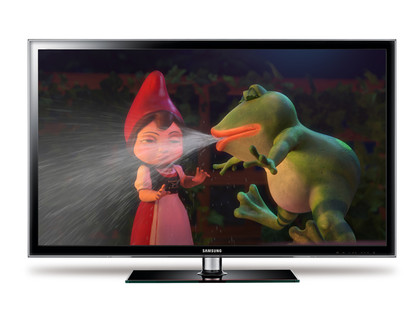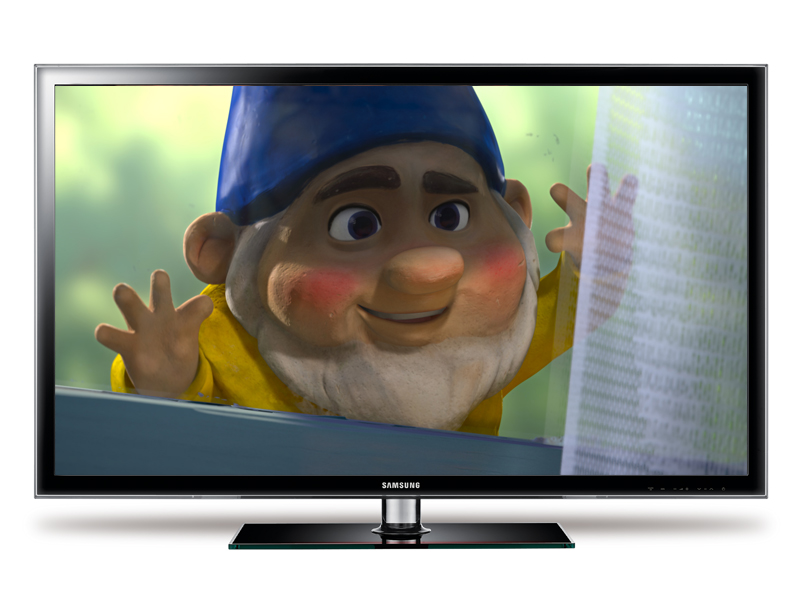Why you can trust TechRadar

Sound
Audio is astonishingly poor. There's plenty of detail – a blast of orchestral music from CDs receives tremendously nuanced treatment – but a complete lack of low frequency is to the overall sound's huge detriment. The various modes, including a choice between Music, Movie, Amplify and Clear Voice, don't do much to help.
Value
If the UE37D5000 had a DVB-T2 tuner for Freeview HD, it would be the steal of the century. It hasn't, but a combination of excellent hi-def images, clean upscaled standard-definition, decent media support from USB and a network, an excellent EPG and 100Hz add up to an ultra-competitive package.
Ease of use
It may lack apps, but the UE37D5000 does a reasonable job with digital media. Those after obscure file playback should head for a media streamer, though the basics are covered well enough here; insert a USB stick and a grid of files is presented, with a thumbnail for each – though a grab or still from each file never materialises.
In our test we managed to get AVC HD, MKV, MOV, AVI, MP4, MPEG and WMV files to play in rudimentary manner – though don't expect niceties like subtitles, chapter skipping, or a choice of audio – this is a relatively basic codec support system.
It's even more rudimentary when on a network. Connected to an iMac using TwonkyMedia we managed to get the same files to play, though not MKV. Given its current popularity, this is a real shame – as is the set's inability to use a hard-disk drive as simple PVR. This rules out at a stroke pause and rewind live TV features and is more evidence that the UE37D5000 is aimed at cable or satellite TV subscribers.
Meanwhile, music in MP3, WMA and AAC formats works across both USB and networks.
Despite lacking hi-def channels, the seven-day electronic programme guide for Freeview is excellent. Showing six channels and two hours of TV schedules in one view, its mixture of nuanced graphics and colour brings it alive, as does a thumbnail of the programme playing underneath, blessedly with audio, too.
The only complaints are that the EPG takes a second or two to appear upon pressing the remote's 'guide' button, and the whole page evaporates if not used for 20 seconds or so.
The remote itself is standard issue Samsung fare that's not changed in yonks; slightly chunky, curved, and of reasonably good build and design. Buttons are large and important keys obvious and well labelled. Not much need, then, for a smartphone app, but one does exist.
With the UE37D5000 on a Wi-Fi network, we downloaded the simply named 'Samsung Remote' from Apple's app store. It wasn't supposed to work with this TV – the remote informed us that only D5500 models and above are compatible – but we had few problems linking-up and operating the UE37D5000.
Trouble is, the gesture screen is way too wild to navigate the EPG (it's tricky to hover over a specific programme without wobbling away), though there are some nice touches – a representation of the remote switches to show the directional keys if, say, you select the 'source' list. All very logical, though we've seen far simpler apps for TVs that do more than just replicate a physical remote.
Despite that haul of pros and few cons, it's the UE37D5000's slim design that will help it see off much of its competition and for many this TV will represent a solid bargain.
Current page: Samsung UE37D5000: Sound, value and ease of use
Prev Page Samsung UE37D5000: Picture Next Page Samsung UE37D5000: VerdictJamie is a freelance tech, travel and space journalist based in the UK. He’s been writing regularly for Techradar since it was launched in 2008 and also writes regularly for Forbes, The Telegraph, the South China Morning Post, Sky & Telescope and the Sky At Night magazine as well as other Future titles T3, Digital Camera World, All About Space and Space.com. He also edits two of his own websites, TravGear.com and WhenIsTheNextEclipse.com that reflect his obsession with travel gear and solar eclipse travel. He is the author of A Stargazing Program For Beginners (Springer, 2015),

